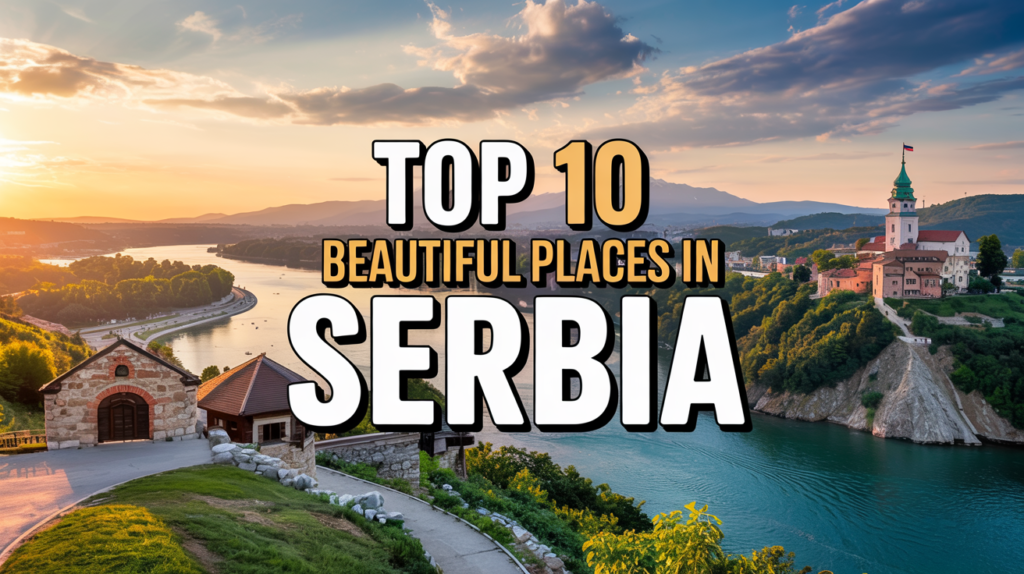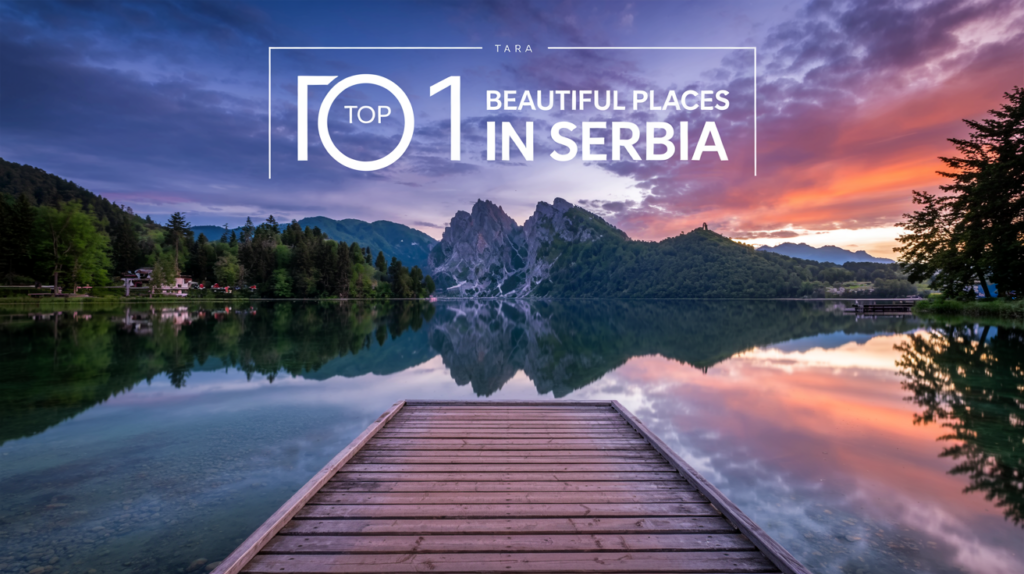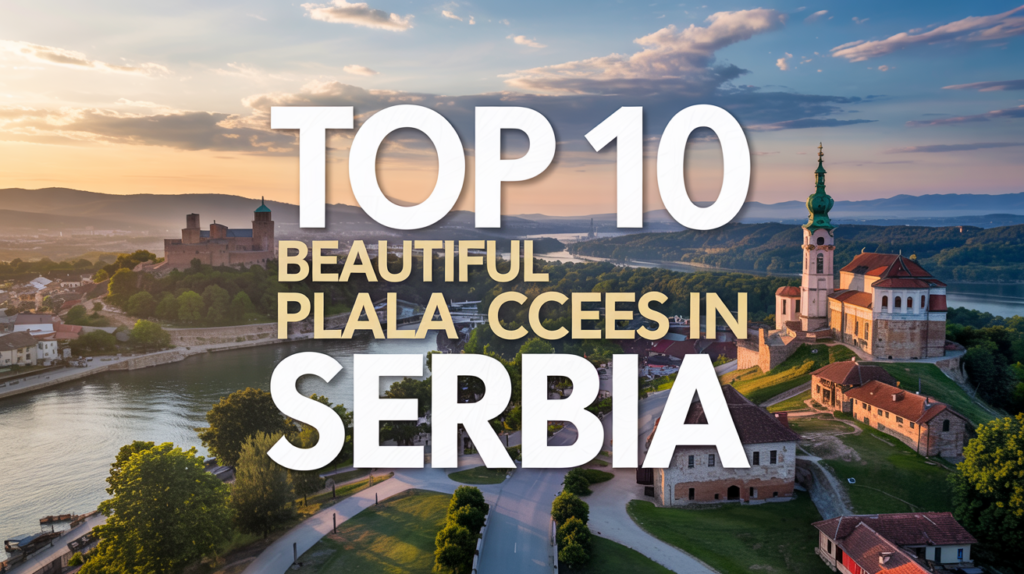Top 10 Most Beautiful Cities to Visit in California | Must-See Destinations
Top 10 Most Beautiful Cities to Visit in California, from the vibrant San Francisco to the scenic Lake Tahoe. Explore diverse landscapes

Welcome to Life Travel!In this video, we will take you on a virtual tour of the Top 10 Most Beautiful Places to Visit in Serbia.
Welcome to Life Travel!
In this video, we will take you on a virtual tour of the Top 10 Most Beautiful Places to Visit in Serbia.
Serbia is one of Europe’s most underrated travel destinations — full of natural beauty, historical sites, and cultural charm. From Belgrade’s vibrant life to the breathtaking Uvac Canyon, this video will help you discover the most beautiful tourist spots in Serbia.
Watch till the end and let us know in the comments which place you want to visit first!
ReadMore: 10 Most Beautiful Places to Visit in Jordan

Table of contents [Show]
Hello and welcome to our Life Travel channel! Today, we’re taking you on a journey to explore the top 10 most beautiful places to visit in Serbia. Serbia, a land of rich history and vibrant culture, offers a unique blend of Eastern and Western influences. From medieval cities with imposing fortresses to ancient monasteries and stunning natural landscapes, Serbia has something for everyone. Whether you’re looking for lively parties, beer festivals, or serene natural beauty, Serbia is a must-visit destination. So, let’s dive into our list and discover the best places to visit in Serbia!
If you’ve enjoyed the video so far, please like, share, subscribe to the channel, and follow us on social media too.
Belgrade, Serbia’s capital and largest city, is a vibrant and dynamic metropolis located at the confluence of the Danube and Sava rivers. Despite its tumultuous past, Belgrade has emerged as a lively and culturally rich city, hosting numerous events ranging from book fairs to music, film, and beer festivals. The Belgrade Fortress is the city’s most famous historic site, featuring museums, churches, and stunning views of the rivers and the city itself. Top museums include the National Museum, with more than 400,000 exhibits, and the Nikola Tesla Museum, dedicated to the famous inventor. Ada Ciganlija, a popular recreational area, offers beaches, sports facilities, and vibrant nightlife.
Subotica, Serbia’s fifth-largest city, is known for its rich cultural heritage and stunning architecture. The city boasts the highest number of art nouveau buildings in the country, making it a must-visit for architecture enthusiasts. Notable buildings include the city hall and the synagogue, both built in the early 1900s. Subotica is also home to the Cathedral of St. Theresa of Avila, built in 1797, which reflects the city’s deep religious roots. The cafes around the main square, home to the city hall and its blue fountain, are a great place to relax and enjoy the ambiance. Don’t miss Buvljak, one of the largest flea markets in Europe, where you can find unique treasures.
Novi Sad, located on the banks of the Danube River, is Serbia’s second-largest city and a vibrant cultural hub. Known for its laid-back atmosphere and beautiful parks, Novi Sad is a perfect blend of history and modernity. The city is famous for its annual EXIT music festival, held in July at the Petrovaradin Fortress, which has never been conquered. Notable buildings include the old town hall, located on the main square, Dvorac Dundjerski, a well-preserved old castle, and the Church of the Great Martyr St. George, a Serbian Orthodox church.
Zlatibor is a popular tourist destination in the mountains of western Serbia. It’s filled with facilities to keep you happy and healthy, from skiing in the winter to hiking in the summer. A ski resort is located at Tornik, the highest mountain at Zlatibor; runs are capable of handling 5,400 skiers an hour. The region is very scenic, with large meadows and quaint historic villages. Old wooden churches and an open-air museum filled with old houses are top attractions. After a day spent exploring the region, savor the flavors of Zlatiborian pršuta, a dried meat, and slivovitz, a plum brandy.
The Studenica Monastery, located in central Serbia, is renowned for its lush green grass and two white marble churches: the Church of the King and the Church of the Virgin. This 12th-century monastery is best known for its outstanding 13th and 14th-century Byzantine frescoes, paintings, and other ornate decorations found in various churches at the monastery. This fits in with the monastery’s reputation as the richest monastery in Serbia and the mother of all Serbian Orthodox monasteries. Stefan Nemanja, who founded Serbia and the monastery, is buried on the grounds.

Đerdap National Park features four gorges that stretch 115 km (72 miles) through the valleys. One gorge, Gospodin vir, has one of the deepest rivers in the world. These gorges combine to make Đerdap Gorge, also known as the Iron Gate because it is the southern entrance to the Carpathian Mountains. The park is located on the Danube River near the imposing riverfront Golubac Fortress. The park, which is home to an abundance of flora and fauna, is one of the most visited areas in Serbia, particularly thanks to a lake formed by a hydroelectric plant.
Prizren may have been a capital of medieval Serbia at one time, but today it is part of Kosovo with its own elected officials, though Serbia considers it an illegally separated province and Serbians are a minority. The top attraction here is the medieval Prizren Fortress, which got its present look from 4-1/2 centuries of Ottoman rule. Prizren is a good walking city, since most everything is close together. Several churches can be found in the city center, with the Church of Our Lady of Ljeviš most notable, since it’s a magnificent example of medieval Serbian architecture.
Kopaonik is the highest mountain in Serbia, becoming a national park in 1981. Rugged and scenic, the park is home to Serbia’s main ski resort, with 25 lifts that can handle 32,000 skiers an hour; the snow lasts from November to May. It’s a great place to hike in the summer, with an extensive array of flora and fauna. The mountain is also known for its mineral wealth, with gold, silver, iron, and zinc mined here in the past. The park also sports unique rock formations, many of which have names, hot springs, geysers, and waterfalls.
Erosion is responsible for one of Serbia’s most majestic rock formations, Devil’s Town, which got its name from the strange rock shapes. Local legend says the rocks are members of a wedding party petrified by the devil. Extremely acidic water, known as Djavolja voda, or devil’s water, also contributed to this geologic phenomenon. Located in southern Serbia, Devil’s Town is composed of more than 200 unique rock formations that tower over the landscape, spread over two valleys on the slopes of Radan Mountain. The pillars are a work in progress; they collapse and then leave room for new formations to grow.
The lively university town of Niš, Serbia’s third-largest city, is a useful stopover point between Belgrade and Sofia or Skopje. It is one of the oldest cities in Europe and the Balkans, dating back to 279 BC. Constantine the Great, founder of Constantinople, was born here; his memorial can be found in the city center. Also in the city center are remains of an 18th-century fortress built by the Turks. Gruesome, but unique to see, is Skull Tower, built from the skulls of Serbians who were decapitated by the Ottomans. Southeast of the city is Niška Banja, a spa popular for its hot water springs, which help treat rheumatic disorders.
And that wraps up our top 10 most beautiful places to visit in Serbia! We hope you enjoyed this virtual journey as much as we did. Don’t forget to like, share, subscribe to the channel, and follow us on social media for more travel inspiration. Thank you for watching, and until next time, keep exploring the world!

Read More: Top 10 Most Beautiful Places to Visit in Serbia
FAQs:
What is the best time to visit Serbia?
The best time to visit Serbia is during the spring (April to June) or fall (September to October) when the weather is pleasant and mild.
Is Serbia safe for tourists?
Yes, Serbia is generally safe for tourists. However, as with any destination, it’s important to take standard safety precautions.
What is the currency used in Serbia?
The currency used in Serbia is the Serbian Dinar (RSD).
What languages are spoken in Serbia?
The official language is Serbian, but English is also widely spoken, especially in tourist areas.
What is Serbia famous for?
Serbia is famous for its rich history, vibrant culture, beautiful landscapes, and lively festivals.
How do I get around in Serbia?
Serbia has a variety of transportation options, including buses, trains, and domestic flights. Renting a car is also an option.
What are the must-see attractions in Belgrade?
Must-see attractions include the Belgrade Fortress, Ada Ciganlija, and the Nikola Tesla Museum.
What historical sites can I visit in Subotica?
Historical sites include the city hall, the synagogue, and the Cathedral of St. Theresa of Avila.
What can I do in Novi Sad?
You can explore the Petrovaradin Fortress, visit the old town hall, and enjoy the vibrant nightlife.
What outdoor activities can I do in Zlatibor?
You can go skiing in the winter, hiking in the summer, and explore the scenic landscapes.
What is the Studenica Monastery known for?
The Studenica Monastery is known for its Byzantine frescoes and ornate decorations.
What natural wonders can I see in Đerdap National Park?
You can see the stunning gorges, the Iron Gate, and the Golubac Fortress.
What is Prizren famous for?
Prizren is famous for its medieval fortress and historic churches.
What can I do in Kopaonik National Park?
You can go skiing, hiking, and explore the unique rock formations and hot springs.
What is Devil’s Town known for?
Devil’s Town is known for its unique rock formations and the legend behind them.
What historical sites can I visit in Niš?
Historical sites include the remains of an 18th-century fortress and Skull Tower.
What should I pack for a trip to Serbia?
Pack comfortable walking shoes, layers for varying weather, and essentials like a travel adapter and local currency.
What is the best way to experience Serbian cuisine?
Try local dishes like pljeskavica, sarma, and ćevapi, and enjoy the rich flavors of Serbian cuisine.
Are there any festivals in Serbia I should know about?
Serbia hosts numerous festivals, including the EXIT music festival in Novi Sad and the Belgrade Beer Fest.
What is the best souvenir to bring back from Serbia?
Popular souvenirs include traditional handicrafts, local wines, and Serbian honey.
Knowledge Galaxy shares expert-backed insights on health, wellness, science, and daily living. Our mission is to simplify complex topics and empower you with practical knowledge for a smarter, healthier life.
Top 10 Most Beautiful Cities to Visit in California, from the vibrant San Francisco to the scenic Lake Tahoe. Explore diverse landscapes
Discover the Top 10 Most Beautiful Places to Visit in Greenland, from the breathtaking Ilulissat Icefjord to the vibrant city of Nuuk.
Discover the Top 10 Most Beautiful Places to Visit in Cyprus, from the ancient ruins of Paphos to the luxurious Elysium Hotel. Explore rich history.
